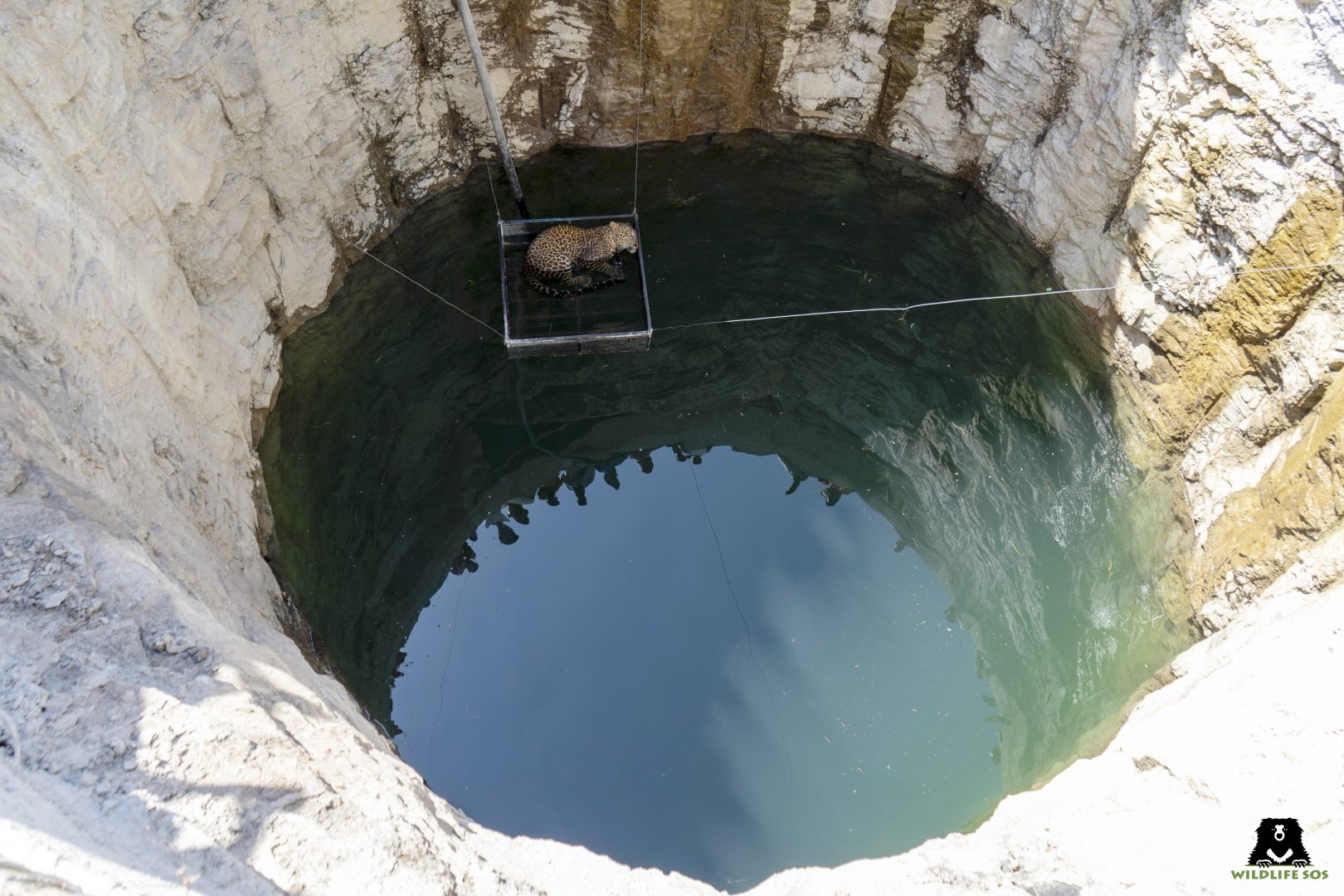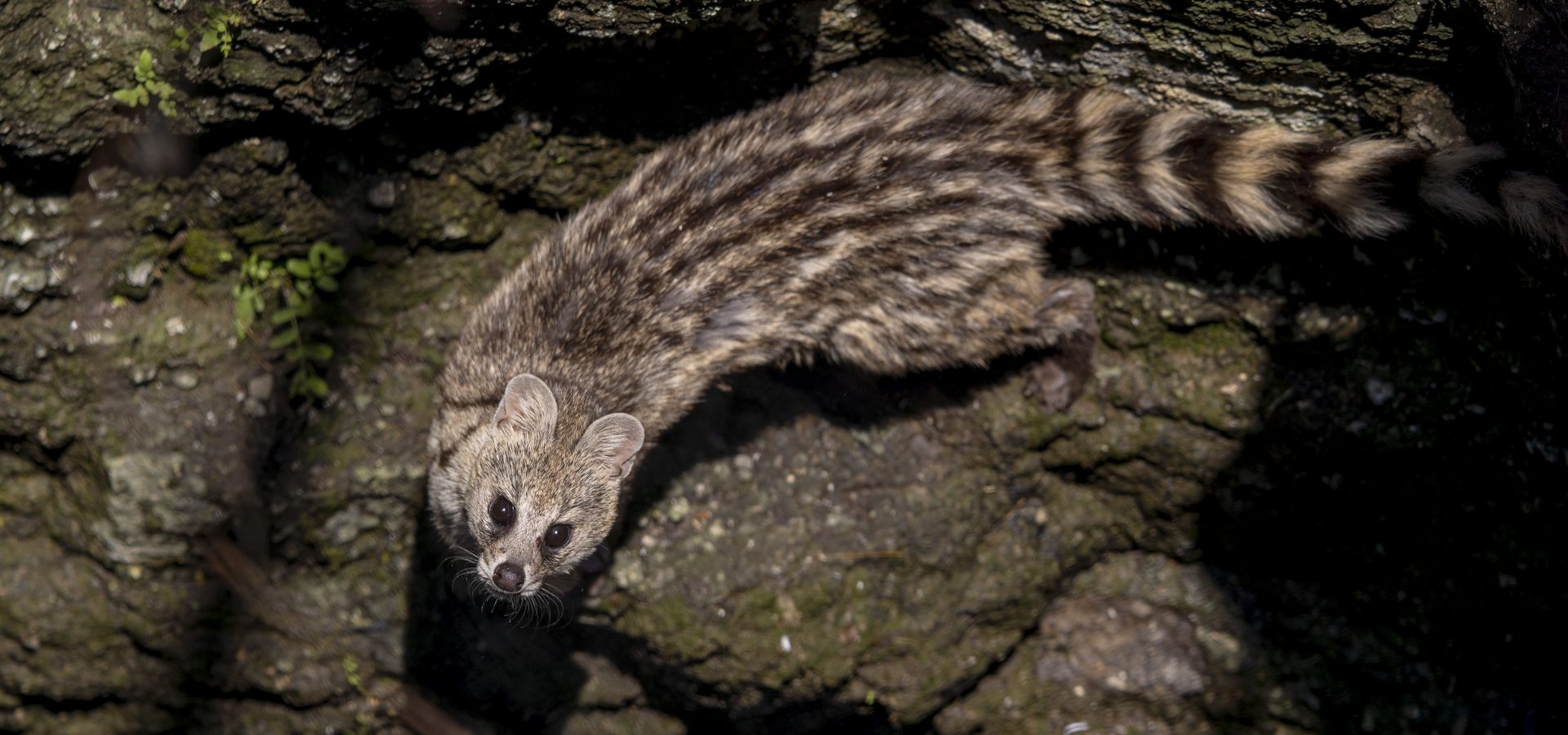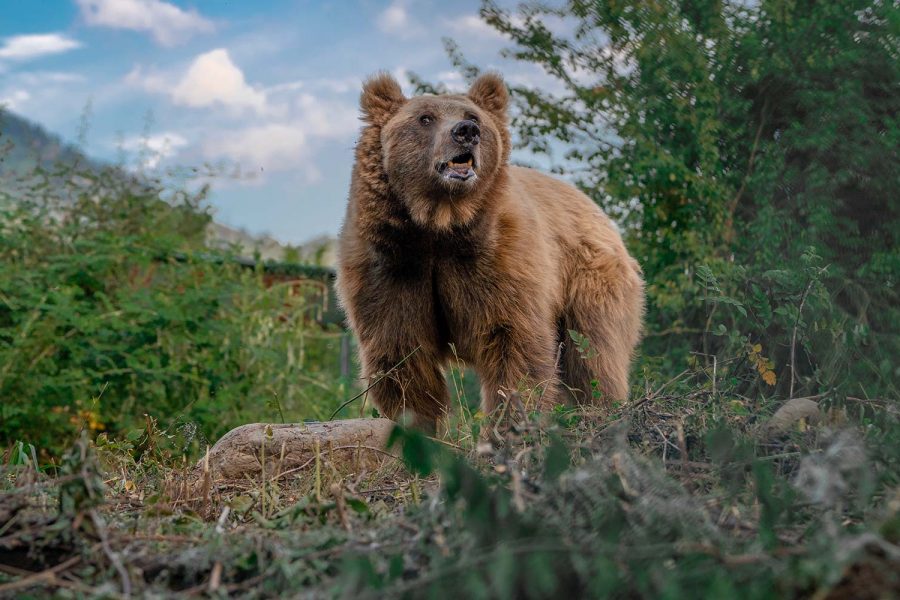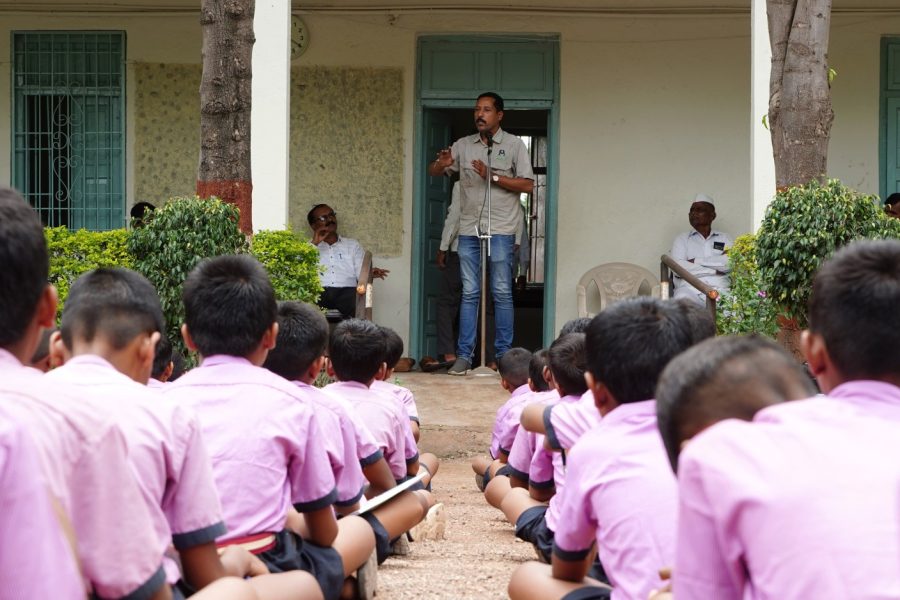Hidden beneath the lush vegetation, open wells have unwittingly become a hazard for our precious wildlife. Originally dug to quench the thirst of humans inhabiting rural and semi-rural regions and that of crops sown by farmers, wells now pose a threat to numerous animals. The very essence of these open wells serves as a reminder of the intricate relationship between humans and the natural world.

The depths of these open wells that perforate massive lands uncover the stories of wild animals that became unexpected victims. If open wells could talk…
They’d Talk of Jackals…
A widespread canid in the country, the golden jackal (Canis aureus) is quite an adaptable species. While this allows the animal to inhabit varying terrains and landscapes, it also poses several anthropogenic threats, including that of open wells.
In the Hadoli village of Uttar Pradesh, some concerned citizens discovered a male jackal trapped in the dark embrace of a 40-foot-deep well. They swiftly alerted the state forest department, which, in turn, reached out to Wildlife SOS for assistance. Armed with specialised equipment, the teams successfully executed the delicate rescue operation.
Similarly, in Junnar, Maharashtra, a farmer’s call for help initiated a three-hour-long mission to save another golden jackal caught inside a 25-foot-deep open, dry well. The collaborative efforts of Wildlife SOS and the forest department ensured a meticulous rescue. In both instances, the distressed jackals were skillfully extricated and released back into the wild.
Also Snakes…
Among the many wild beings that fall victim to open wells, snakes, the often misunderstood reptiles of India, are no exception.
One chilling incident took place in October 2023 when a nearly seven-foot-long Indian rock python found itself in a dire situation near Vadodara. The reptile had descended into the depths of a 60-foot-deep open well. Fortunately, three members of the Wildlife SOS-GSPCA Rapid Response Unit rushed to rescue the python. After assessing the depth of the well, one of the rescuers was lowered down, who exercised extreme caution to safely extricate the snake. The python was handed over to the Gujarat Forest Department and later released to its natural habitat.
A similar situation occurred when villagers in the Junnar district of Maharashtra spotted a venomous Indian cobra stuck in an open well along with a golden jackal! The two were trapped together in a 25-foot-deep dry well. In an arduous two-hour-long operation, the Wildlife SOS rescued the animals and released them in a suitable habitat after a careful medical examination.
They’d Talk of Leopards…
Another story that echoes loudly from within open wells is that of the leopard. One of the five big cats found in India, leopards face numerous threats posed by human activities. Recently, Junnar became the stage for a dramatic rescue operation as a nearly eight-year-old female leopard found itself ensnared in a 50-foot-deep open well. Residents promptly alerted the Maharashtra Forest Department, who along with Wildlife SOS, extricated the troubled leopard.
Similarly, in July last year, a female leopard was rescued by the teams in Pune. Our veterinary officers performed a comprehensive health assessment of the leopard at the site before releasing it in the wild. A month prior to this, an adult male leopard grappled with the challenges of a 30-foot-deep open well. Despite the operation’s duration extending to nearly five hours, the collaborative effort between Wildlife SOS and the forest department was a success in rescuing the leopard. Another leopard was saved from drowning in an 80-foot-deep well in the Junnar forest range in May 2023.
Our teams orchestrate innovative measures to help lift up animals from gaping wells — sometimes by using plastic crates, a charpai, or even trap cages!
And Hyenas…
Solitary and nocturnal, the striped hyena also becomes a victim of the open wells in India. One such hyena was found in the clutches of a nearly 30-foot-deep open well in Buchkewadi village of Maharashtra. The discovery unfolded when a villager, intending to turn on his well’s water pump, was confronted with a sight that would alert the entire community. A four-member rescue team from Wildlife SOS, armed with rescue gear and a trap cage, reached the location along with the forest department.
The teams’ strategy involved lowering a trap cage into the well, patiently coaxing the exhausted hyena to enter. Soon, it was released into a neighbouring forest after a thorough medical examination.
Civet Cats As Well…
In landscapes where human habitation intertwines with the wild, even smaller animals like civets can’t escape the perils of open wells. In April 2023, a village in Pune became the backdrop for one such dramatic situation. Local farmers were jolted by an unfamiliar sound emanating from a nearby 45-foot open well. Investigating further, they learnt that a Small Indian civet was caught inside the well, and promptly reached out to the forest department, which informed Wildlife SOS for its rescue.
A month before this incident, a similar tale had unfolded in the Junnar division, where another civet found itself trapped in a 25-foot-deep well. The teams collaborated once again to rescue the distressed civet. Both the civets were carefully released into their natural habitat after a thorough medical examination.
It is estimated that nearly 8.7 million open wells are present in India, ranging in size from 2 m to 20 m in diameter, and 1 m to at least 70 m in depth. These wells dug for irrigation, water supply, or other purposes, rarely feature a lid or protective barriers to prevent animals from falling in. Most wells also lack any form of escape for animals that tumble into them by accident. Those wells that are located on the fringes of forested lands become a potential death trap for wildlife.
Wildlife SOS continues to work closely with local communities and various stakeholders to find innovative solutions for mitigating this threat. That is why Wildlife SOS’ Open Wells Conservation project aims to cover a total of 40 wells in Maharashtra. Our first step involves identifying those wells most prone to any wild animals falling. The team has devised a strategy to build a cover for these that not only ensures the safety of humans and animals, but also allows the procurement of water used by local residents. To date, the teams have managed to successfully cover 15 such open wells.
To become a part of this initiative by Wildlife SOS, in collaboration with the Maharashtra Forest Department, you can consider donating to us. You can also support our mission to protect animals by signing this petition.





